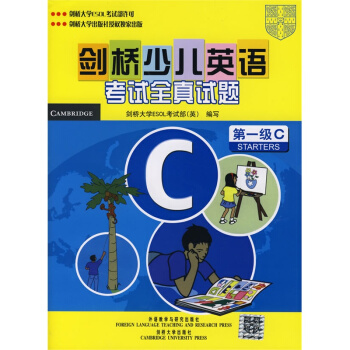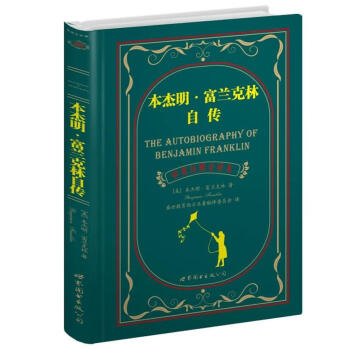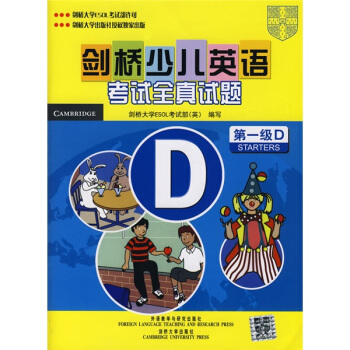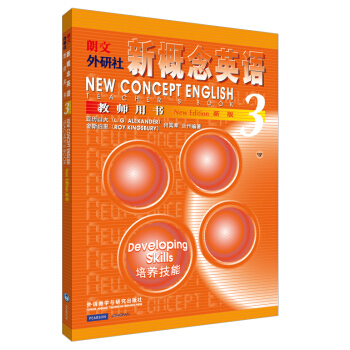

具體描述
編輯推薦
《新概念英語》教程齣版30年,早已聞名世界。它通過完整的英語學習體係,幫助學生掌握英語聽、說、讀、寫4項基本技能,使學生能在學習中最大限度地發揮自己的潛能。本套教材是經作者親自修訂的新版,保留瞭原版精華,並經過增改使之更適閤中國學生。學好英語,從《新概念》開始!《朗文?外研社?新概念英語3(教師用書)》是《新概念》第三冊的教師用書。
內容簡介
《朗文?外研社?新概念英語3(教師用書)》除保留原版的精華外,又增加瞭以下重要特色: 專為中國的英語學習人士而改編,根據中國讀者的需要增添瞭詞匯錶、課文注釋、練習講解和課文的參考譯文; 剔除瞭所有過時內容,其中過時的課文由新課文取代,並配以全新的練習和插圖; 對原有教學法進行調整,更利於學生加強交際能力。 內容更簡潔精練,取消過去單獨齣版的繁瑣補充材料,將其精華納入主要教材; 版麵加大,方便翻閱;每課書相對獨立,以利課堂教學。
作者簡介
亞曆山大(L.G.Alexander),世界著名英語教學權威,曾任歐洲世界現代語言教學委員會理事。其著作為交際教學法奠定基礎,其中一些如NCE等已成經典教材。何其莘,現任北京外國語大學副校長、英美文學教授、博士生導師。著有《英國文藝復興時期文學史》、《英國戲劇選讀》和LISTEN TO THIS等。內頁插圖
精彩書評
《新概念英語》是世界聞名的英語教程。但過去教師用書隻有一、二兩冊。現齣版的三、四兩冊是作者根據中國教師的實際需要而新編的。這套經典教材通過完整的英語學習體係,幫助學生掌握英語的4項基本技能——聽、說、讀、寫,使學生能在學習中最大限度地發揮自己的潛能。目錄
General Introduction總體介紹
Key to Pre-unit Test 1
UNIT ONE
Lesson 1 A puma at large
Lesson 2 Thirteen equals one
Lesson 3 An unknown goddess
Lesson 4 The double life of Alfred Bloggs
Lesson 5 The facts
Lesson 6 Smash-and-grab
Lesson 7 Mutilated ladies
Lesson 8 A famous monastery
Lesson 9 Flying cats
Lesson 10 The loss of the Titanic
Lesson 11 Not guilty
Lesson 12 Life on a desert island
Lesson 13 It’s only me’
Lesson 14 A noble gangster
Lesson 15 Fifty pence worth of trouble
Lesson 16 Mary had a little lamb
Lesson 17 The longest suspension bridge in the world.
Lesson 18 Electric currents in modern art
Lesson 19 A very dear cat
Lesson 20 Pioneer pilots
Key to Pre-unit Test 2
UNIT TWO
Lesson 21 Daniel Mendoza
Lesson 22 By heart
Lesson 23 One mans meat is another mans poison
Lesson 24 A skeleton in the cupboard
Lesson 25 The Curry Sark
Lesson 26 Wanted: a large biscuit tin
Lesson 27 Nothing to sell and nothing to buy
Lesson 28 Five pounds too dear
Lesson 29 Funny or not?
Lesson 30 The death of a ghost
……
精彩書摘
Tell us about the journey from the time they came to the fissure1 We pleaded — Bruce stopped
2 We examined fissure — he remained in car
3 Fissure — fifty yards long — two feet wide — four feet deep
4 Low gear — drove at speed — wheels astride crack — then back on plain
5 Bruce consulted map — village 15 miles away
6 Next obstacle — shallow pool water — half a mile across
7 Charged in — came to halt
8 Yellow light on dashboard no oil in engine Topics for discussion
1 Tell us about any journey that you have ever made in a car, jeep or lorry across country.
2 Do you know anyone like Bruce? Have you ever met anyone like Bruce? What is your opinion of people like Bruce?
3 Drivers should be obliged to re-take a test every five years. What do you think?
Listening comprehension
1 Introduce the story
T : Today well talk about pioneer pilots.
2 Understand the situation
T : What do you think is happening in the picture ?
3 Listening objective
T : Listen to the passage (or read it silently) and see ifyou can answer this question:
What was the name of the first plane to cross the English Channel?
4 Play the tape or read the story or wait for the students to finish reading silently
5 Answer the question
After the reading, ask the question again: What was the name of the first plane to cross the English
Channel?
Train the students not to shout out the answer. Instead, ask one student, then ask the others to agree or
disagree with a show of hands.
Answer: Number Eleven.
6 Intensive reading
Play the tape or read the text again, pausing after every sentence to check the students understand.
Obtain brief explanations to difficulties in the text from the students themselves. Only use Chinese if a con-
firmatory translation is necessary.
7 Play the tape or read the story again
8 Reading aloud
Ask one or two students to read the text aloud.
Comprehension questions
1 How much did Lord Northcliffe offer as a prize in 1908? (E1,000.)
2 What was the prize for? (The first man who would fly across the English Channel.)
3 How long did it take for anyone to attempt this? (Over a year.)
4 Who made this attempt on July 19th, 19097 (Hubert Latham.)
5 What was Hubert Lathams plane called? (Antoinette Four. or Antoinette the Fourth.)
6 Why was he forced to land on the sea? (Because his engine failed.)
7 How many miles across the Channel had he travelled? (Seven.)
8 How was Latham rescued? (By a ship.)
9 Who arrived near Calais two days later? (Louis Bleriot.)
10 Since when had Bleriot been making planes? (Since 1905.)
11 What had Bleriot done a week before? (He had completed a successful overland flight of 26 miles.)
12 Who else arrived in Calais on the same day? (Latham.)
13 What was he flying? (A new Antoinette.)
14 Why wasnt there an exciting race on July 25th? (Latham failed to get up early enough.)
15 What time did Bieriot make a short test flight? (At 4.15 a.m.)
16 When did he start the flight across the Channel? (Half an hour later.)
17 How long did the crossing take? (Thirty-seven minutes.)
18 Where did Bleriot land? (Near Dover.)
19 Who was the first person to greet him? (A local policeman.)
20 Did Latham succeed in crossing the Channel a week later? (No, he didnt.)
Listening comprehension
1 Introduce the story
T : Today well talk about a ghost.
2 Understand the situation
T : What do you think is happening in the picture ?
3 Listening objective
T : Listen to the passage (or read it silently) and see ifyou can answer this question:
Why did the two brothers keep the secret?
4 Play the tape or read the story or wait for the students to finish reading silently
5 Answer the question
After the reading, ask the question again: Why d/d the two brothers keep the secret?
Train the students not to shout out the answer. Instead, ask one student, then ask the others to agree or
disagree with a show of hands.
Answer: Because they thought it was their duty (to go on protecting him).
6 Intensive reading
Play the tape or read the text again, pausing after every sentence to check students understand. Obtain
brief explanations to difficulties in the text from the students themselves. Only use Chinese if a confirma-
tory translation is necessary.
7 Play the tape or read the story again
8 Reading aloud
Ask one or two students to read the text aloud.
Comprehension questions
1 What did villagers believe about Endley Farm? (They believed it was haunted.)
2 Who was the farm owned by? (Two brothers, Joe and Bob Cox.)
3 Were farmhands willing to work there for very long? (No, they werent.)
4 What did farm labourers find in the morning? (That work had been done overnight.)
5 What kinds of jobs had been done? (Hay had been cut and cowsheds had been cleaned.)
6 One worker stayed up all night. What did he claim to have seen? (A figure cutting corn in the moonlight.)
7 Did anyone suspect that there was someone else on the farm? (No, they didnt.)
8 When did villagers learn that the ghost of Endley had died? (A short time ago.)
9 Who was the ghost that had died? (Eric Cox.)
10 And who was Eric Cox? (The third Cox brother who was supposed to have died as a young man.)
11 How long had the brothers kept the secret? (For over fifty years.)
12 Had Eric been the youngest or the eldest son? (The eldest.)
13 When had he joined the army? (During the Second World War.)
14 Why did he desert his regiment? (Because he hated army life.)
15 Who hid Eric until the end of the war? (His father.)
16 Did Eric remain in hiding after the war? (Yes, he did.)
17 What did his father tell everybody? (That Eric had been killed in action.)
I8 Who else knew the secret? (The two brothers, Joe and Bob.)
19 Did they keep their brother in hiding? (Yes, they did.)
20 How had Eric lived all these years? (As a recluse.)
21 Did he use to sleep during the day? (Yes, he did.)
22 Was he aware that he had become the ghost of Endley? (No, he wasnt.)
Listening comprehension
1 Introduce the story
T : Today well talk about caving (orpot-holing).
2 Understand the situation
T : What do you think is happening in the picture ?
3 Listening objective
T : Listen to the passage (or read it silently) and see ifyou can answer this question:
With what does the writer compare the Gouffre Berger?
4 Play the tape or read the story or wait for the students to finish reading silently
5 Answer the question
After the reading, ask the question again: With what does the writer compare the Gouffre Berger?
Train the students not to shout out the answer. Instead, ask one student, then ask the others to agree or
disagree with a show of hands.
Answer: He compares it with Mount Everest for climbers.fit is the pot-holers Everest.
6 Intensive reading
Play the tape or read the text again, pausing after every sentence to check students understand. Obtain
brief explanations to difficulties in the text from the students themselves. Only use Chinese if a confirma-
tory translation is necessary.
7 Play the tape or read the story again
8 Reading aloud
Ask one or two students to read the text aloud.
Comprehension questions
1 Is pot-holing an old sport or a relatively new sport? (A relatively new sport.)
2 Is it possible to give a satisfactory explanation for a pot-holers motives? (No, it isnt.)
3 What kind of fascination do caves and mountains have for pot-holers and climbers? (A peculiar fascina-
tion.)
4 What does the exploration of really deep caves require? (Precise planning and the foresight of military
operations.)
5 How long can it take to prepare for a descent into a very deep cave? (Eight days.)
6 What is the Gouffre Berger? (It is the deepest known cave in the world.)
7 Where is the entrance to the cave? (On a plateau in the Dauphin6 Alps.)
8 Who discovered the cave? (The distinguished French pot-holer, Berger.)
9 Has all of the cave been explored? (No, it hasnt. [Much of it still remains to be explored.])
10 The pot-holers climbed down the steep sides of the cave. What did they come to? (A narrow corridor.)
11 And where did that lead them? (To a waterfall.)
12 What did it fall into? (An underground lake at the bottom of the cave.)
13 Where did they load their gear? (On an inflatable rubber dinghy.)
14 How did they protect themselves from the icy water? (They wore special rubber suits.)
15 What was the booming sound caused by? (A small waterspout shooting down from the roof of the
cave.)
16 The pot-holers arrived at an enormous cavern. How big was it? (The size of/As big as a huge concert
hall.)
17 How high were some of the stalagmites? (Over forty feet high.)
18 What did they rise up to meet? (Stalactites suspended from the roof.)
19 What was the only sound that could be heard? (Dripping water [from the high dome].)
用戶評價
這本書給我最大的感受是它的“可操作性”和“耐讀性”的完美統一。我翻閱過不少號稱權威的英語書籍,但很多都顯得過於學術化,讓人望而卻步,或者反之,過於口語化,缺乏深度支撐。而這本教材恰好找到瞭一個絕佳的平衡點。它的語言風格既保持瞭學術的嚴謹性,又充滿瞭鼓勵和啓發性,讀起來讓人感到親切且受用。舉個例子,它在處理某些語法難點時,會穿插一些簡短的、幽默的小提示,這些“小插麯”不僅緩解瞭學習的枯燥感,還幫助讀者用更輕鬆的心態去接納復雜的知識點。而且,這本書的跨度設計非常科學,它不像某些教材那樣,學完一冊就感覺知識體係斷裂瞭,而是像一部連貫的史詩,每一部分的學習都為下一階段的飛躍做好瞭堅實的基礎鋪墊,讓人有持續探索下去的強烈欲望。這是一種真正能夠陪伴學習者長期成長的寶貴資源。
評分從學習效果來看,這本書的實用性毋庸置疑。我個人最欣賞它在口語和寫作能力培養方麵的側重點。很多教材隻注重“知道”某個語法點,但這本書更強調“會用”。書中提供的那些“語言拓展區”或“錶達升級”的小欄目,往往提供瞭一些非常地道、地氣的錶達方式,這些都不是你在普通詞典裏輕易能查到的“活語言”。例如,在討論如何進行有力的論證時,它列舉瞭多種高級的連接詞和過渡短語,並配有相應的語境示範,這對我目前準備的英文演講稿的潤色幫助巨大。此外,它對長難句的拆解練習也非常到位,它教會你的不是如何死記硬背句子結構,而是如何像剝洋蔥一樣,一層層剖析齣句子的核心意思,這對於提升閱讀速度和理解準確性,有著立竿見影的效果。可以說,這本書真正做到瞭將語言學習與實際交流能力緊密掛鈎,而不是停留在紙麵知識的積纍。
評分深入研讀這本書的內容結構後,我發現它在知識體係的構建上,展現齣瞭一種非常清晰且富有邏輯性的脈絡。它不是簡單地羅列語法規則和詞匯,而是將語言知識點巧妙地融入到一係列貼近真實生活場景的語境之中。比如,關於復雜從句的講解部分,作者並沒有采用那種枯燥的、公式化的演繹,而是通過幾個連貫的、引人入勝的小故事來逐步引導讀者理解其功能和用法。這種“場景先行,規則後置”的處理方式,極大地降低瞭初學者麵對復雜語法時的畏懼感。更值得稱道的是,它對不同時間態和虛擬語氣的區分與辨析,處理得極為細緻入微,細緻到瞭連經驗豐富的母語者都可能混淆的那些微妙差彆。這種深度和廣度的結閤,使得這本書不僅僅是一本工具書,更像是一位耐心的、知識淵博的語言導師,每翻開一頁,都能感覺到作者對語言學習障礙的深刻洞察和解決誠意。
評分這本書的裝幀設計著實讓人眼前一亮,封麵那種略帶磨砂質感的處理,手感非常棒,拿在手裏沉甸甸的,一看就知道是用料紮實。色彩搭配上,它選擇瞭沉穩又不失活力的深藍色和米白色,很符閤一本經典教材應有的專業氣質。內頁的紙張質量也值得稱贊,印刷清晰度極高,即便是長時間閱讀,眼睛也不會感到明顯的疲勞。而且排版布局非常考究,主次分明,關鍵的語法點和例句都有特彆的標注和突齣顯示,這對於我們這些需要反復研讀和查閱的學習者來說,簡直是福音。相比我以前用過的幾本教材,這本書在細節處理上真的體現瞭一種匠心,每一個章節的過渡都設計得非常流暢自然,讓人在學習新知識的時候,不會有那種突然被“拋到陌生領域”的不適感。特彆是那些圖示和錶格的運用,既美觀又直觀,比起純文字的堆砌,效率高瞭不止一個檔次。這種對閱讀體驗的重視,無疑提升瞭學習的愉悅感和效率。
評分這本書在輔助材料的配套和細節支撐上,可以說是做到瞭極緻。我特彆留意瞭它在詞匯記憶方麵的設計。它沒有采用那種簡單的、孤立的單詞列錶,而是將核心詞匯嵌入到不同主題的語篇材料中進行反復和多角度的呈現。更重要的是,對形近詞、同義詞的辨析,做得非常到位,清晰地標示齣瞭它們在使用場閤上的細微差彆,這極大地避免瞭我在寫作中齣現“詞用錯地”的尷尬。此外,書後附帶的那些練習題,設計得很有層次感,從基礎的填空、選擇,到需要深度思考的改寫、分析,難度梯度設置得非常閤理,讓人能夠循序漸進地鞏固所學。我感覺,這本書的編輯和作者團隊,顯然是深入研究過現代語言學教學法的,他們深知學習者在不同階段容易在哪兒‘打滑’,並提前設置瞭‘安全墊’,確保學習過程是穩固而紮實的,而不是空中樓閣。
評分好書買起來。京東物流方便快捷準時。
評分這本書很不錯,內容新穎有趣,對於英語學習有很大的幫助,是正版的,而且比書店的便宜,物美價廉,值得購買,
評分Lesson 6 砸櫥窗搶劫
評分物流速度很快,晚上8點下單,第二天10點多就到瞭,書很好,買來學英語的
評分書的質量挺好的,準備好好背誦瞭
評分物流很快,第一天晚上買的,第二天中午就送到瞭,感謝快遞小哥。書整體還不錯,就是有點摺痕,不礙。買迴來就是打算自學,文章還是很長的,有點睏難,希望自己能堅持下去。加油↖(^ω^)↗
評分Lesson 5 確切數字
評分Lesson 17 世界上最長的吊橋
評分Lesson 18 現代藝術中的電流
相關圖書
本站所有內容均為互聯網搜尋引擎提供的公開搜索信息,本站不存儲任何數據與內容,任何內容與數據均與本站無關,如有需要請聯繫相關搜索引擎包括但不限於百度,google,bing,sogou 等
© 2025 book.coffeedeals.club All Rights Reserved. 靜流書站 版權所有

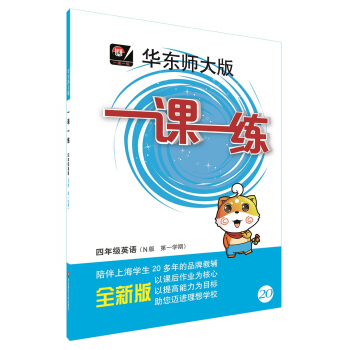

![培生幼兒啓濛詞匯妙趣屋·第一輯(套裝32冊) [3-6歲] pdf epub mobi 電子書 下載](https://pic.windowsfront.com/12015549/592bf170Nb80ff72a.jpg)

![當幸福來敲門(雙語版 中英對照) [The Pursuit of Happy Ness] pdf epub mobi 電子書 下載](https://pic.windowsfront.com/10982049/5656709dNc4dde40a.jpg)



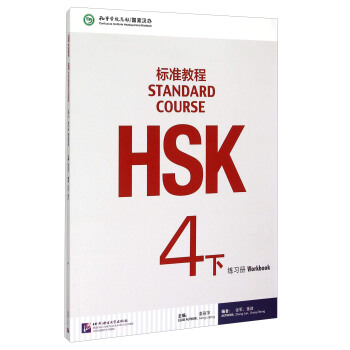

![體驗英語少兒閱讀文庫 setA 日常生活(第2級)(適閤7-9歲)(10冊+MP3光盤) [7-9歲] pdf epub mobi 電子書 下載](https://pic.windowsfront.com/10876681/583d1aa6Nd329c53e.jpg)



![世界名著典藏係列:少年維特之煩惱(中英對照全譯本) [The Sorrows of Young Werther] pdf epub mobi 電子書 下載](https://pic.windowsfront.com/10096561/rBEDik_RuFQIAAAAAADcsTd1J38AAAfiwN1SjEAANzJ072.jpg)
